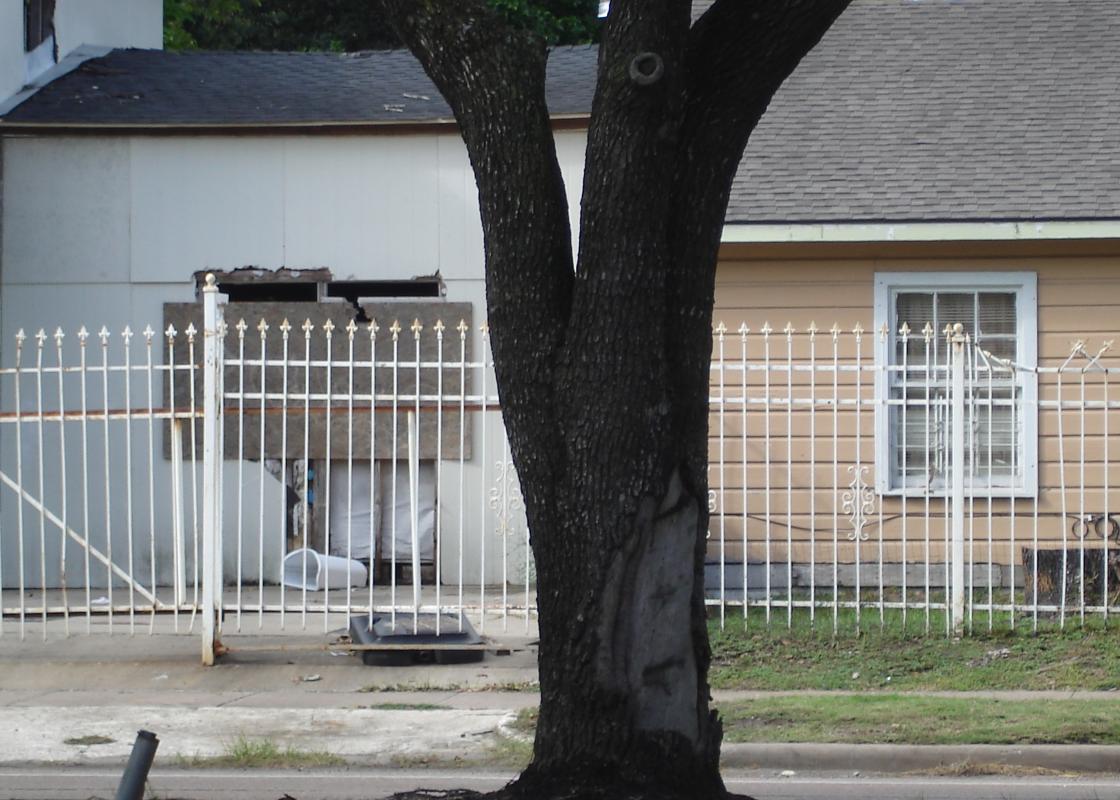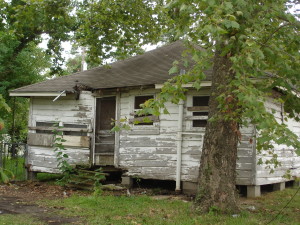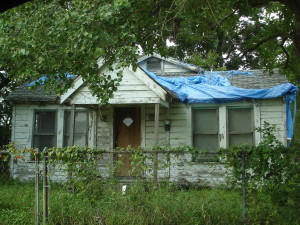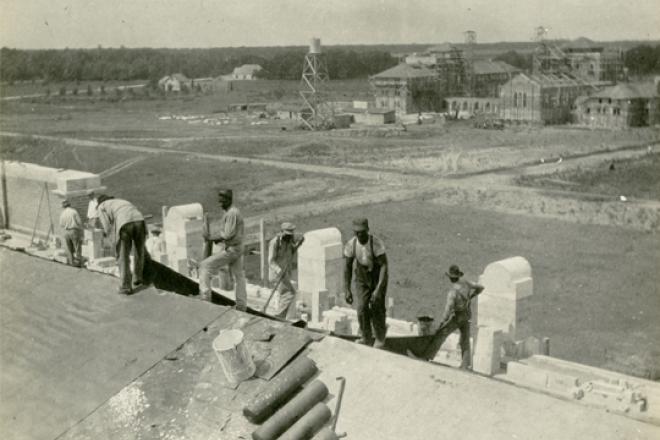Coming from a lower-middle class family in a small town in the Texas Hill Country, I was awed by the sheer opulence of everyone and everything around when I came to the “big city” to study at Rice University. Despite news reports and rumors of there being another, grittier side to Houston, the only one I experienced was where everyone had more than enough to get by—until the summer of 2009.
I worked for Avenue Community Development Corporation, a local non-profit that focused on bringing more affordable housing to the Washington Ave and Near Northside areas of the city. Far from the manicured and quaint ranch style homes of the West University area where my apartment is, much of the Near Northside looked like the photograph my grandmother once showed me of the Depression-era Austin she grew up in.
My main job was to gather and analyze statistical data on the physical condition of homes in the Ryon subdivision, which is roughly identified as the area south of Cavalcade to Finch St, and east from Robertson to Hardy St. About a week into my internship I began assessing the condition of the local housing stock—and I cannot forget the deprivation. Many of the houses were in desperate need of major structural repair; the majority had some combination of broken windows and/or doors taped together, vinyl blue tarps tied over holes in roofs, and poorly cared for lawns that were either dead, filled with debris, or overgrown. Empty lots were being used as illegal trash dumping zones, and were filled with everything from garage sale items to dead domestic animal carcasses. Some lots still had a physical dwelling structure standing on them, but were completely abandoned and quite literally falling over to one side.
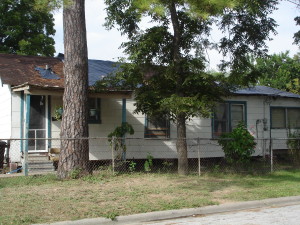
The roughly average home condition in the Ryon neighborhood
Old industrial plants, located inside the neighborhood, that have been closed for decades draw gangs, graffiti, and invite violence. There was several instances where the land of a housing lot was divided into two or more “houses,” one of which was usually about the size of a tool shed with the address “2812 -C” spray painted next to it. At one address, this additional “house” on a lot had what appeared to be a makeshift outhouse behind it. This was the kind of thing I was used to seeing in the rural areas around where I grew up, where it isn’t always possible to have reliable water service; I never imagined I would see an used outhouse within miles of the downtown of a city revered for being affordable, modern, and resilient in the face of economic downturn.
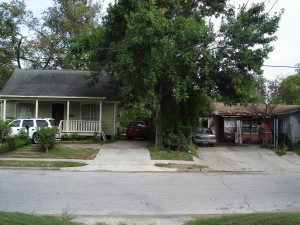
An Avenue CDC house adjacent to a house in need of repair
This experience really opened my eyes to the very real and very desperate need in this city for better urban planning, more affordable single-family housing options, and much more community and volunteer involvement in these areas. The Near Northside is one of a few areas of Houston that is known to be mostly comprised of those well below the US median income level and unable to make ends meet. I met one family where a mother, her teenage daughter, her son, and both of their infant children all lived in a 600-square-foot one-bedroom apartment. The building next to the one they lived in had been burned in a fire some months ago and was condemned, but never torn down or repaired. There is debris of the burned building blocking part of the parking lot and an assorted array of homeless that take turns sleeping in the roofless building on half-burned furniture. All three of the adults in that apartment worked alternating shifts of minimum wage jobs, but it still wasn’t enough to get them into at least a two-bedroom. There is a very real, very urgent need for the construction of good, sustainable, low-income affordable housing here that a lot of us don’t see or imagine exists only a few miles from the penthouses of the Galleria.
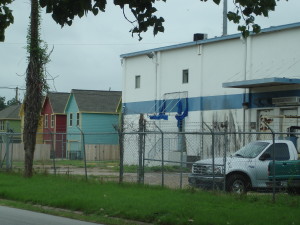
Avenue CDC developed affordable homes across the street from an abandoned factory
The beautiful part of seeing such deprivation, however, was getting to work with the local residents and dedicated volunteers active in trying to rehabilitate Washington Avenue and the Near Northside. There is a small army of philanthropists, AmeriCorp members, city workers, community builders, and residents that really get out into the community and get the neighborhood active in its own preservation, both from a cultural and physical urban standpoint.
April Lind is a senior Social Sciences major at Rice University. She hails from Leander and Cherry Spring, TX.


